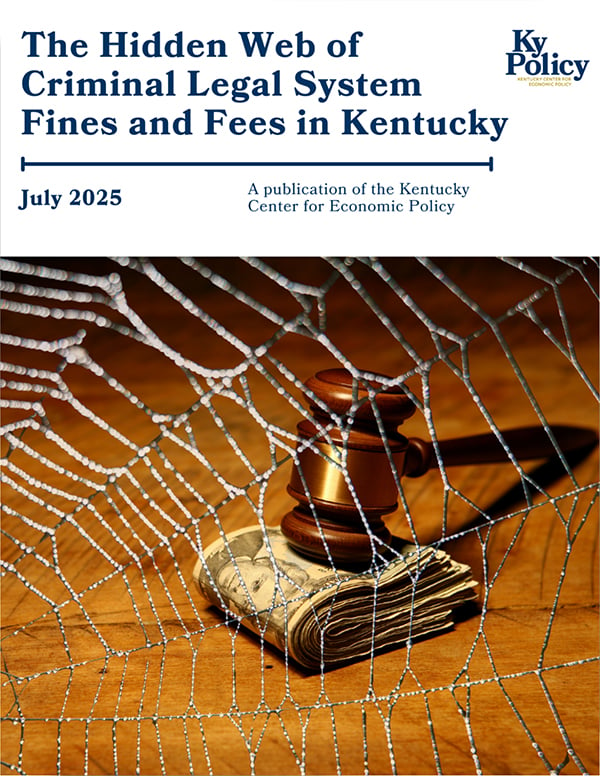Many anglers are familiar with the sport fish species in Kentucky’s lakes, rivers and streams.
But Kentucky waters also support a number of fish species that can grow to enormous size, that anglers may not be as familiar with, because they are not actively fished for, are of low food value, or restricted to specific habitats.
Kentucky is home to a total of 248 native fish species with an additional 19 species that have been introduced either intentionally or accidentally, according to the Kentucky Department of Fish and Wildlife Resources (KDFWR).
Some are these fishes are the so-called rough fish species, netted by commercial fishermen and sold to fish markets. Some are gigged and snagged seasonally, or shot with arrows by bow fishermen. A few of the species are taken by both sport and commercial fishermen because of their high food value.
Here are four examples:

• Paddlefish — The Paddlefish (Polyodon spathula) is found in the Tennessee, Cumberland, Green, Kentucky and Little Sandy rivers, and other tributaries to the Ohio River. Its common name is spoonbill.
The Paddlefish is a filter feeder, using the long spatulate projection of its snout to muddy up water on soft bottoms, and gill rakers to filter out plankton. Because of this feeding behavior Paddlefish are not ofter caught by anglers.
But, by regulation, if a Paddlefish is caught on hook and line the angler may keep the fish, if so desired, The daily creel limit is two, and there is no minimum size limit.
Most Paddlefish are taken by commercial fishermen. While its flesh is tough and of low food value, its dark to light gray colored eggs (roe) make excellent caviar, comparable to imported caviar.
The Kentucky state record Paddlefish weighed 106 pounds and was taken from the Ohio River on March 24, 2004.
• Catfish — Catfish are pursued by both sport anglers and commercial fishermen because of their high food value and the large size they can reach.
The three main species are:

1. The Blue Catfish (Ictalurus furcatus) can attain enormous size, with 20-inch to 50-inch fish, that can weigh up to 30 pounds, being fairly common. This catfish, which thrives in current, is native to the lower Ohio and Mississippi Rivers and their major river tributaries, including the Tennessee, Cumberland, and Green. The state record Blue Catfish weighed 106.90 pounds and was caught from the Ohio River in 2018.
2. The Channel Catfish (Ictalurus punctatus) is by far the most widely distributed catfish species in Kentucky. Adults are commonly 12 to 20 inches long, and on rare occasions 30 inches or more. They are tolerant of turbidity and can live in warm water. The Channel Catfish is native to all of the state’s river drainages and there are significant populations in about 20 major lakes. Populations are sustained by natural reproduction and annual or periodic stockings.
3. The Flathead Catfish (Pylodictis olivaris) is more common than Blue Catfish, but less abundant than Channel Catfish. Flathead catfish can grow to enormous size. Fish ranging from 15 inches to 50 inches, weighing up to 60 pounds, are common. They can live for 20 years. The Flathead Catfish is most abundant in the Ohio River, and its major tributaries, thriving in large impoundments. Populations are sustained by natural reproduction.
While there is no daily creel limit or minimum size limit on small catfish, trophy fish creel limits and minimum size limits are in effect. Consult the regulations in the 2024-25 Kentucky Fishing and Boating Guide on page 5.

• Carp — With their high reproductive rate and few predators, Carp numbers can quickly climb to a high percentage of the water body’s carrying capacity of fish. In fact, all nine of the most prominent species of carp in family Cyprinidae, are considered globally invasive species.
1. The Common Carp (Cyprinus carpio), a non-native species, is found statewide, in all of Kentucky’s major river drainages, and large populations are present in many major lakes. Adults grow to about four feet and can reach 80 pounds, with individuals in the 30-inch size range weighing up to 20 pounds.
Most anglers consider the Common Carp to be a nuisance “trash” fish, a bottom feeder of poor quality flesh. The Common Carp can be caught on prepared baits (dough) and worms.

2. Four species of non-native, invasive carp include the Asian Carp (Bighead, Silver, and Black) and Grass Carp. These fish are reproducing statewide and threaten Kentucky’s aquatic ecology by outcompeting native fishes for forage (zooplankton and fry). Their populations in some areas are expanding at an alarming rate. The Grass Carp (Ctenopharyngodon idella), often referred to as the white amur, has been stocked in Kentucky waters for years.
Adults can grow to about four feet in length and weigh up to 100 pounds, although most fish reported from Kentucky are less than 50 pounds. The Grass Carp can eat up to 40 percent of its body weight in aquatic plants every day. The triploid, non-reproducing, grass carp have been introduced into farm ponds, small lakes and a few major lakes as biological control for unwanted aquatic vegetation, but escapees from these stockings are taken regularly by hook and line anglers and bow fishermen from larger streams and rivers, particularly in western Kentucky.
• Gar — There are four species of gar in Kentucky with the highest populations in western Kentucky’s rivers, lakes and wetlands.

1. The Alligator Gar (Atractosteus spathula) is the largest of the living gar species and one of the largest freshwater fishes in North America.
Now in its 15th year, Kentucky’s Alligator Gar restoration program continues with its long-term goal of restoring self-sustaining populations of this iconic, native species back into suitable habitat in the state. Alligator Gar may not be creeled, it’s a catch and release fishery.
2. The Longnose Gar (Lepisosteus osseus) is easily distinguished from other gars by having an extremely long and narrow snout. The Longnose Gar is the most abundant of the four species in Kentucky, capable of growing to six feet in length and weighing up to 50 pounds.
3. The Spotted Gar ( Lepisosteus oculatus) has a unique pattern of large spots on the top of head and body. Coloration is brown to olive green, becoming paler on the sides and whitish to pale yellowish below.
4. The Shortnose Gar (Lepisosteus platostomus) is similar to spotted gar, but lacks spots on head and body.
The Spotted Gar and Shortnose Gar are rather small, usually less than three feet in length and weighing five to 10 pounds.
Gar are fish eaters. They can be caught still fishing live minnows, and casting small floating/diving crankbaits. They are a challenging target for bow fishermen. Their bony flesh is not considered high quality tablefare, and their eggs are toxic to humans.
Commercial fishing
The rough fish that have economic value and are harvested by licensed commercial fishermen from Kentucky’s rivers and lakes are Asian Carp, Paddlefish eggs (roe), Catfish, and three species of Buffalo (Bigmouth, Smallmouth and Black Buffalo). These species bring in the most dollars to commercial fishermen.
In 2021 Kentucky had 278 licensed commercial fishermen. Commercial fishing tackle includes trotlines, gill nets, hoop nets, slat traps and seines. By regulation, commercial fishermen must place metal “gear tags” on their nets, as a form of identification. Not all lakes, their tailwaters, and rivers are open to commercial fishing. Consult the regulations.

With the increase in the harvest of Asian Carp and other rough fish by commercial fishermen, fish processing plants and fresh fish markets have opened in Kentucky in recent years.
The largest fish processor is in western Kentucky. Two Rivers Fisheries, with facilities in Wickliffe and Eddyville, opened in July, 2012. Two Rivers Fisheries contracts with local commercial fishermen who harvest carp, buffalo and catfish from the Ohio and Mississippi rivers, and Kentucky Lake and Lake Barkley. After processing, the fish are flash-frozen, boxed up, and shipped out to destinations in Asia, and around the world.
KDFWR started an Asian Carp Harvest Program in 2013. The program allows commercial anglers targeting Asian Carp to fish in previously restricted areas. Since the program started, the Asian Carp harvest has grown dramatically from just under one million pounds in 2013, to 7.6 million pounds by 2020.
Kentucky’s commercial fishing information and regulations are available online from the KDFWR website.
Gigging and snagging
By definition gigging is impaling fish with a multi-pronged, barbed spear, typically fitted on the end of a wooden pole.
Snagging is hooking a fish by rapidly jerking, while reeling, one or more weighted treble hook through the water.
A typical snagging outfit is a long, stout fishing rod, fitted with heavy guides, and a big casting reel spooled with high tensile strength braided or monofilament line.
Only rough fish such as Carp, Suckers, Paddlefish, Buffalo, and Catfish may be taken. The statewide season for gigging and snagging is from February 1 through May 10.
Consult page 14 of the 2024-25 Kentucky Fishing and Boating Guide for the detailed regulations.
Bow fishing
Late spring and summer are prime time for bow fishing on Kentucky’s major lakes and their tailwaters.
Persons using a bow and arrow for fishing must have the appropriate fishing license. By regulation in Kentucky waters, long bows, recurve bows, crossbows, compound bows, or pneumatic air arrow launching devices are legal. Most bow fishermen prefer recurve bows, or compound bows, for a number of reasons, including ease of mounting a reel, and the fact they are available in a wide range of draw weights.
Draw weight is a major consideration because it doesn’t take much poundage to spear a fish with a fishing arrow. Typically 30 to 40 pounds of draw weight is ideal for shooting fish. Fiberglass bow fishing arrows are heavy so they carry their energy and penetrate well
Shooting fish is most popular after water conditions stabilize, and surface temperatures rise above 70 degrees F. The target species are the rough fish species. Ideal conditions are calm winds at night, with clear and stable water levels.
Carp, the most targeted species, are often found up shallow, especially in the spring when they spawn. Gar, Catfish, Paddlefish and other rough fish species are also taken. Some species have daily creel limits. Not all waters are open to bow fishing. Consult the detailed regulations on page 13 of the 2024-25 Kentucky Fishing and Boating Guide.
Kentucky’s diversity of fish species includes some really big fish that any angler would be excited to land, regardless of the fishing method.


















Can you take rough fish all year long with a cast net in KY with a regular fishing license?